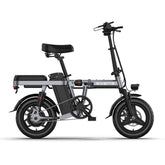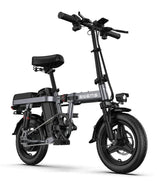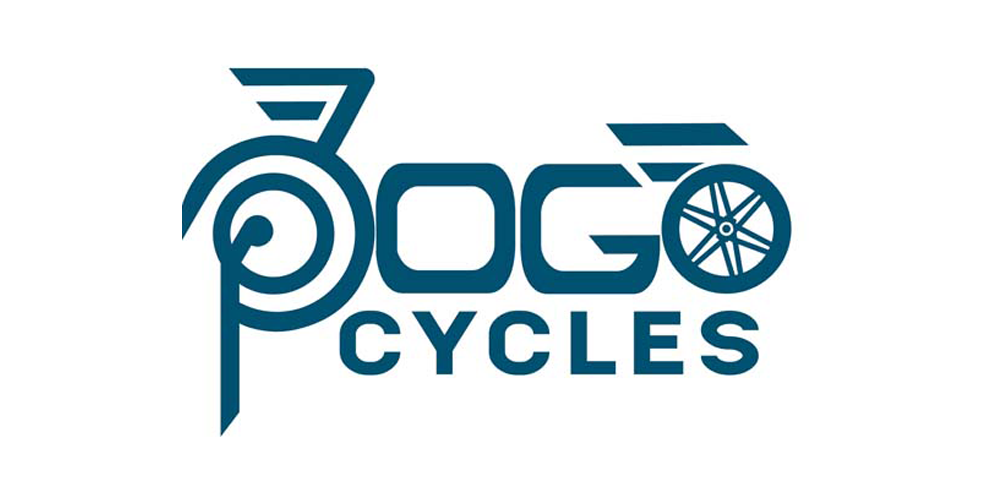Difference Between Torque And Cadence Sensing
Introduction:
E-bike research might be challenging. When you are completely new to the world of electric bikes, especially if you are thinking about purchasing a bike of your own, these phrases can be very bewildering. Although you may wish to carefully examine the advantages and disadvantages, it is simple to become confused.
The pedal-assist systems (PAS) of electric bikes are one of their main advantages. When a rider pedals, an ebike's electrical aid activates the bike's motor, enabling you to travel more quickly, for longer, and farther than you could on a regular bicycle. All ebikes have a PAS, but they all function differently.
Torque and cadence sensing are the two primary categories of pedal assistance systems (PAS). Both of them send a signal to the bike's engine to activate pedal assistance in response to the rider's movements, but they differ in the timing and method of doing so. Everything from the comfort of your ride to the battery's capacity is impacted by these variances.
The distinctions between torque sensing and cadence sensing, as well as the advantages and disadvantages of each, are covered below.
-
E-Bike Pedal Sensors:
When you pedal an electric bike equipped with Pedal Assist Sensors, the motor activates immediately. You can manage the motor without a throttle if you have pedal assistance. Pedal sensors can be divided into two categories: cadence, which determines whether you are pedaling, and torque, which determines how hard you are pedaling.
-
The Cadence Sensors
The fundamental cadence sensor on the crank employs a magnet to switch the motor ON when you begin cycling and OFF when you stop. It functions something like a switch. You must manually move the assist mode up and down in order to manage the boost level and speed using the cadence sensor.
A cadence pedal sensor is available on the majority of entry-level e-bikes. The pedal help provided by this sensor can feel jerky, sluggish, and counterintuitive. However, it is a cheap approach to add some form of pedal aid to the bike. Also, the motor will actively oppose your attempts if you try to pedal more quickly than it is spinning.
-
Torque sensors (Advanced)
The torque sensor, which makes use of a precise strain gauge, is a completely separate technology. It monitors the real force you provide to the pedal, sampling the pedal stroke 1,000 times per second. To calculate how much electric power should be applied to the bike, a torque sensor measures how hard the rider is pedaling.
The rider feels bionic as a result of this real-time modification, which technically amplifies every input you make. Torque sensors are a common feature of more expensive e-bikes, and in some nations, cadence-only sensors are prohibited from being sold. The drawback of this technique is that it is substantially more expensive to deploy because the precision component is more expensive.
What is the difference between torque sensing and cadence sensing?
A torque detecting PAS will typically provide you with a smoother ride because the pedal assistance is coordinated with your motions. Cadence abruptly turns on and off. On a bike, this can frequently feel jerky, sluggish, or even counterproductive to what you are attempting to do. These problems, however, might not be as evident if you are usually riding on flat ground because the pedal assist won't need to be changed as frequently as it would on hilly terrain.
The battery capacity of your bike is also determined by PAS. With cadence sensing PAS, magnets and sensors exclusively take into account the assist level being employed to calculate the amount of pedal assistance.
The amount of pedal pressure using torque sensors determines the amount of motor assistance. No battery power is lost when slowing down or going downhill because your bike helps you more as you exert more force. Compared to bikes with cadence sensing PAS, bikes with torque sensing PAS typically have a substantially higher mileage. This is especially true if you anticipate frequently traveling across steep terrain.
-
Benefits of Pedal Assist
The advantages of electric bikes with pedal assistance are numerous and excellent. Pedal assist is a clear choice for many riders of electric bikes since it enhances the user experience and is an intuitive, responsive bike feature. You'll conserve energy by using the pedal assist. If you have a bike with pedal assistance, whether you're out for a lengthy ride or there's a tough hill along your usual commute, you'll complete your journey feeling more energized rather than exhausted.
The pedal assist feature makes climbing hills and navigating tough terrain considerably simpler.
For beginners and amateurs, employing pedal assist is preferable to using a throttle because it is much more intuitive. Find an electric bike with pedal assist technology if you want to get one but are concerned about learning how to operate a throttle. Your bike's range per charge can also be increased with pedal assistance. You can travel further than if you were only using the battery by combining physical pedaling and battery power. This also encourages you to workout more!













